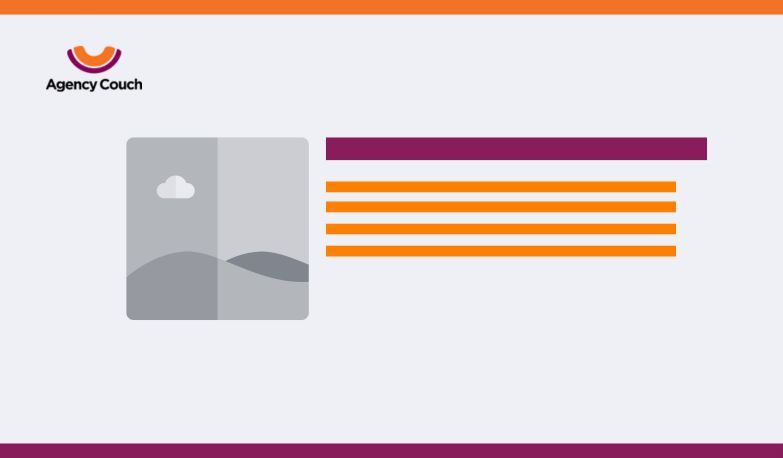Creating a brand personality is an essential part of branding. And a lot of research and planning goes behind choosing the right fonts and color palettes that would determine how the audience will perceive your brand.
The fonts and colors you select for your company have more impact on its image than you imagine. Your visual elements reflect your personality and promptly show who you are. According to stats shared by RenderForest, 75% of people recognize a brand by its logo, 60% by its visual style, 45% by the brand’s signature color, and 25% by its unique voice, which makes the importance of branding evident.
If you observe, you will find many brands that have been successful in establishing their identity through their logos, color schemes, and fonts. For example, you can quickly recognize McDonald’s when you see a bright yellow ‘M’ on a red background. Similarly, the script fonts on Coca-Cola help you spot it in the store without looking closely.
In this article, we will discuss how you can pick the right fonts and colors to design your brand identity.
But let’s first understand why it is important to have a coherent design guide.
The Importance of A Design Guide
If you use a range of colors and fonts with different marketing campaigns, the lack of consistency hampers your brand recognition. On the other hand, if you maintain consistency in design elements, your brand becomes more recognizable. This is called brand identity.
A brand design guide lays out standard rules about colors, fonts, logo variations, and elements that will be used in your messages and designs. Brand consistency plays a huge role in establishing your brand’s identity, and the design guide helps you ensure that. This set of rules allows even newer team members to align with your existing style.
How to Choose A Color Palette That Reflects Your Brand’s Values?
The elements you choose to represent your brand influence customer behavior, and colors comprise a major portion of the visuals. So, it becomes essential to study and understand each color, and the emotions they trigger, and identify the ones that align with your brand’s vision and personality.
The color palette should be followed uniformly across all mediums. Right from your print, packaging, and billboard ads to marketing emails and notifications, everything should be designed in the same color scheme.
Remember, each color may imply both positive and negative emotions, all you need to do is understand how you can elicit the desired feelings. Here’re the most powerful emotions different colors trigger:
Red: Red is the color of strong emotions, such as excitement, passion, danger, alertness, boldness, and even violence. Brands opt for red for love, passion, and adventurousness. Red is also believed to trigger impulse buying.
Green: Green represents nature, and hence induces a sense of freshness, health, and sustainability. This color is also associated with wealth. You can choose this color to show your brand’s realistic nature and liveliness.
Blue: This is the second prominent color of nature taken from the sky and the sea. This color brings out feelings of calm and tranquility. It also implies trust and competence, which is why you see most networking platforms like Facebook, Twitter, and Skype in Blue.
Purple: Purple is the color of royalty. It exudes class, sophistication, and power, making it the color of mystery and royalty.
Yellow: Yellow is vibrant, joyful, and optimistic. The brands that want to come across as fun, lively, and friendly use lighter shades of yellow. The darker shades don’t send out good vibes, which is why it is rarely used in branding, especially as the core color.
Grayscale: Grayscale shades are often used in automobile and technological industries. These shades are associated with authority and minimalism and are preferred in monochrome.
Pink: Pink is feminine, delicate, and romantic yet bold and aesthetic. The color also embodies comfort, warmth, hope, and compassion.
Orange: This color is very close to yellow in nature yet very different. Orange is believed to spark enthusiasm, energy, cheerfulness, and anticipation.
Determine Your Brand Vision And Values
To narrow down your color choices, you should figure out your brand’s essence. Try to find answers to questions like:
- Do you want your consumers to be happy, curious, or sophisticated?
- Do you want them to feel classy, rich, energetic, intelligent, or delighted?
- How do you want your consumers to perceive your brand- fun, luxurious, inspirational, comforting, or timeless?
Your color choice should be a perfect combination of your brand’s personality and the emotions you are willing to induce in your audience.
Choose Core and Secondary Colors
The next step is to choose a core color. The core color will become your signature identifier across all platforms, including your logo, website, and social media campaigns. This color usually dominates your visuals and can sometimes be mixed with your secondary colors or not.
When it comes to choosing a secondary color palette, you can opt for varying shades of your core color, or you may go for bold combinations that trigger a range of emotions you want.
For instance, Cadbury has very brilliantly chosen purple as their core and white and brown as their secondary colors. They used purple as a tribute to British queen Victoria, and the color makes the user feel delightful too.
The white color in Apple stands for its purity, innovation, and aesthetically-designed products. Similarly, the majority of social media platforms choose blue as a symbol of trust and dependability.
On the other hand, Google has gone for a mix of primary colors and an additional green to exert versatility and its easy-to-use nature.

How to Choose the Right Fonts?
Fonts are as important as colors in your branding. The fonts you include in your design guide will become a part of your brand recognition alongside your signature color palette. There are two ways to find fonts that speak for your brand- you either create a customized font for yourself just like Disney did or choose one from already available options.
Whatever you opt for, the first rule of thumb is that your font should be legible. The next step is to consider your brand personality, the emotions you want to spark, and your target market in order to select an apt set of fonts. Even though you can go for a single font for your entire branding, it is best to have three fonts that complement each other.
One of the three fonts can be used in your logo, the other in headings and subheadings, and the last one in the body of your content. This segregation will keep your brand style coherent. As for the fonts, we will discuss the most popular font categories you may choose from.
Font Categories For Brand Style Guide
Serif
Serif fonts are the classic type and have been used in academic and formal setups for ages. This font type exudes professionalism and authority. You can use Serif fonts if your brand suggests sophistication and timelessness. This font is also most legible and can be read even in smaller sizes. Some widely used serif typefaces are: Times New Roman, Georgia, and Courier New.
Sans Serif
As the name suggests, Sans Serif fonts are more modern typefaces, contrary to Serifs. It gives your brand logo a minimal and sleek look being more on the aesthetic side of design elements. These fonts are also easy-to-read and are best for even smaller font sizes. Companies that want to convey innovation, modernity, and boldness, can use Sans Serif. Some examples of this font type are Arial, Roboto, and Calibri.
Handwritten
Handwritten typefaces mimic different handwritings, making them look informal and more candid. If you want your brand to look eccentric, approachable, and unique, you can opt for these fonts. This font type helps your audience connect with your brand more as it adds a personal touch to your marketing communications and attracts the eyes. Some of the best handwriting fonts you can use are Permanent Marker, Carosello, Buffalo, and Hanley Pro.
Script
The typefaces in Script fonts are nearly related to handwriting fonts. However, they differ in style. Handwritten fonts have no set pattern to follow how someone writes while script fonts use the cursive style of writing. Contrary to previous font types, Script type fonts look more elegant, stylish, and formal. So if your brand is artistic, feminine, or creative, you can choose them. Readability can be an issue in smaller sizes of these typefaces.
Display
Display or decorative fonts are majorly customized fonts used by brands for themselves, such as Disney has their custom font called Waltograph to highlight their mystical and magical world of stories. Custom fonts are usually copyrighted. These fonts are the right choice for you if you want to stand out and showcase your brand’s fun and distinctive side.

Resources To Look For Font Ideas
There are multiple ways to find a variety of fonts. Some of the most trustable resources are:
- Adobe Typekit
- Font Joy
- MyFonts.com
- Font Squirrel
- Font Combination Library
- Mixfont
- Typewolf
Tips to Remember
Implement Branding Internally
It is one of the best ways to ensure that everyone is well-aware of your style guide and is used to referring to it before charting out a brand message or visual. Once you incorporate your logo, fonts, and color scheme in all your internal emails, newsletter, memos, presentations, and other communications, it becomes easy for your employees and teammates to retain your branding. Besides, using the style guide in your internal and external resources ensures consistency.
Maintain Timelessness
If you opt for some trendy fonts that either go out of style easily or do not align with your brand’s vision, you would need to recreate the whole design guide time and again. Hence, it is better to stick to classic fonts and themes, keeping your company’s long-term goals and vision in mind. It will help you retain your brand’s identity for a long time.
Balance Your Visuals
If you are choosing more than one font, ensure they complement each other and do not look rumpled. Similarly, if your fonts are too artistic or decorative, it is better to keep the color theme minimalistic. The more elegance and orderliness, the more the trust. On the other hand, if your visuals look disorganized, you may find it hard to gain your users’ confidence.
The Final Thoughts
Creating a brand style guide is a fun process. You gather resources, ideas, and inspirations before narrowing down your options. Now that you know how to choose the right fonts and colors, and what to look for to include in your design guide, you can experiment. It is not an impromptu task that you can expect to finish in a day.
If you are just starting out, keep aside a part of the day to discuss the style guide ideas and engage your employees. This is one of the best ways to make your staff feel involved and valued. Besides, more people bring more ideas to the table. So have fun!



